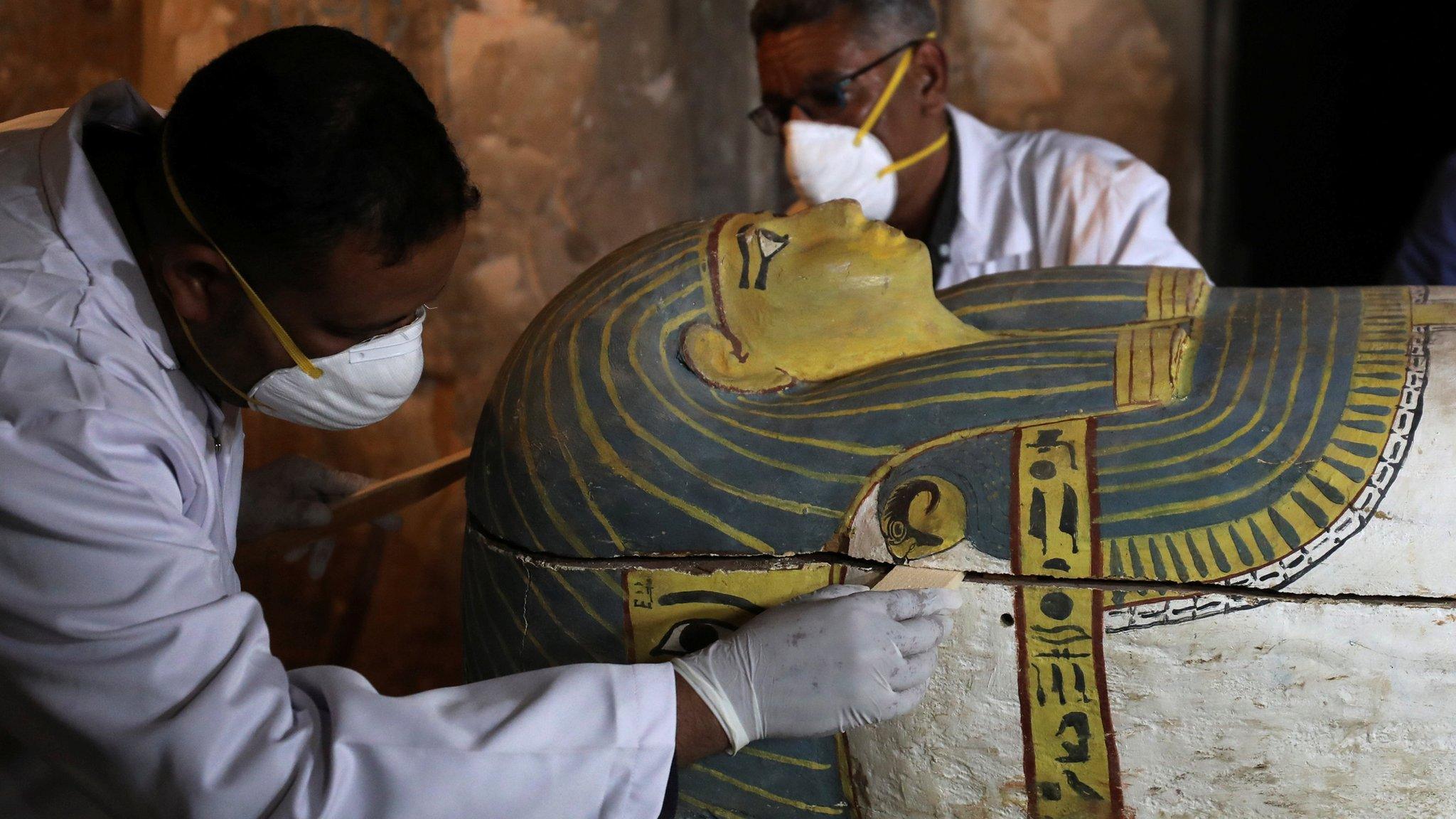Egypt tomb: Saqqara 'one of a kind' discovery revealed
- Published
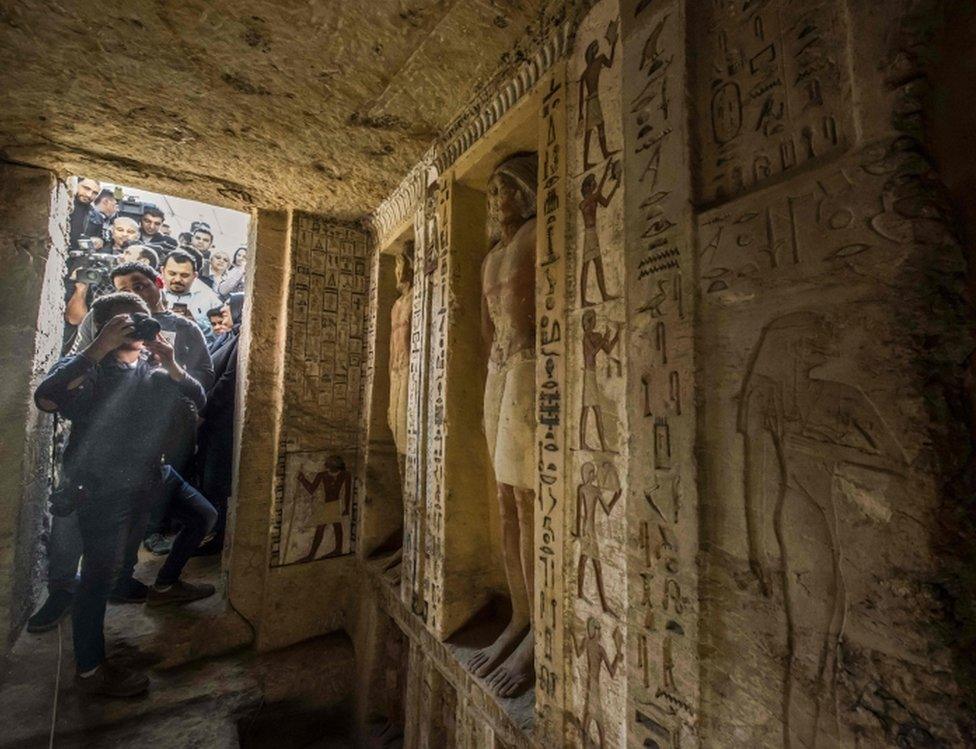
Journalists were allowed into the newly-discovered tomb, which experts have called "exceptionally well-preserved"
Archaeologists in Egypt have made an exciting tomb discovery - the final resting place of a high priest, untouched for 4,400 years.
Mostafa Waziri, secretary-general of the Supreme Council of Antiquities, described the find as "one of a kind in the last decades".
The tomb, found in the Saqqara pyramid complex near Cairo, is filled with colourful hieroglyphs and statues of pharaohs. Decorative scenes show the owner, a royal priest named Wahtye, with his mother, wife and other relatives.
Archaeologists will start excavating the tomb on 16 December, and expect more discoveries to follow - including the owner's sarcophagus.
Here's what they've found already...
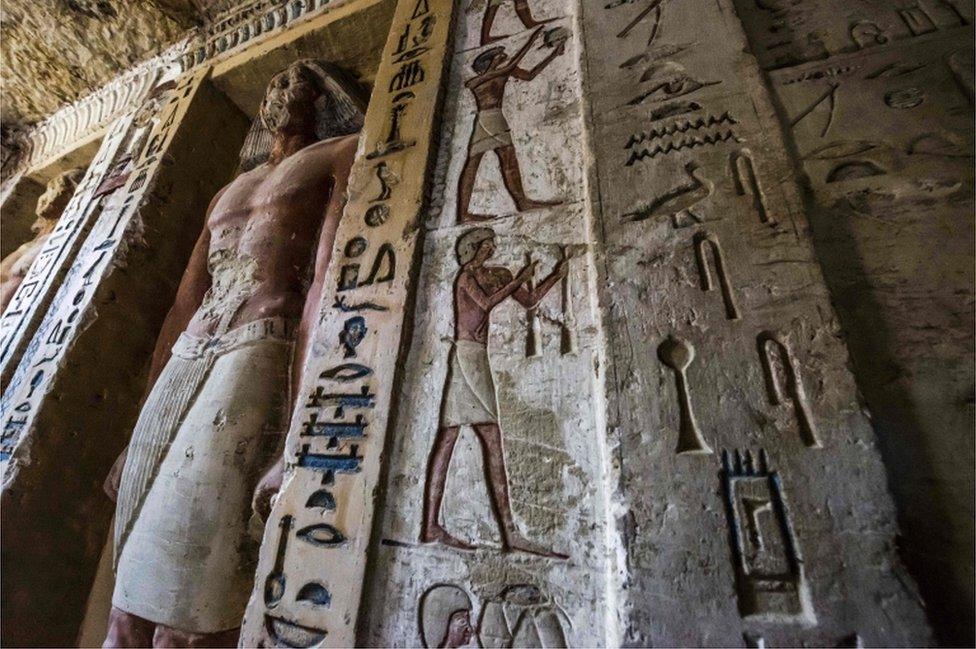
The private tomb is part of a vast, ancient necropolis in Saqqara - where the earliest known Egyptian pyramids are located
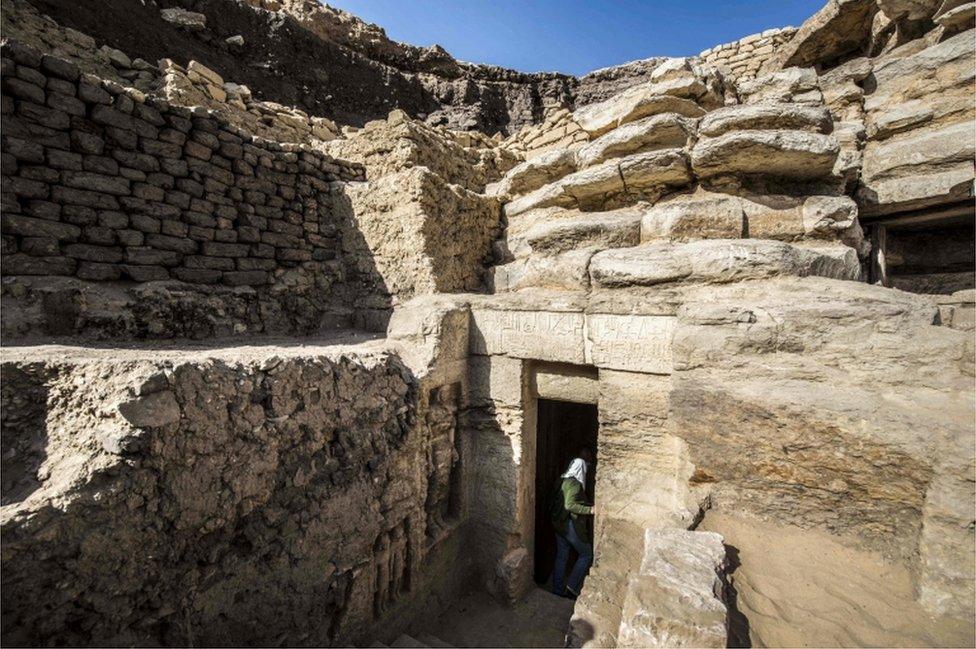
The tomb was found in a buried ridge, which may help explain why it escaped looters
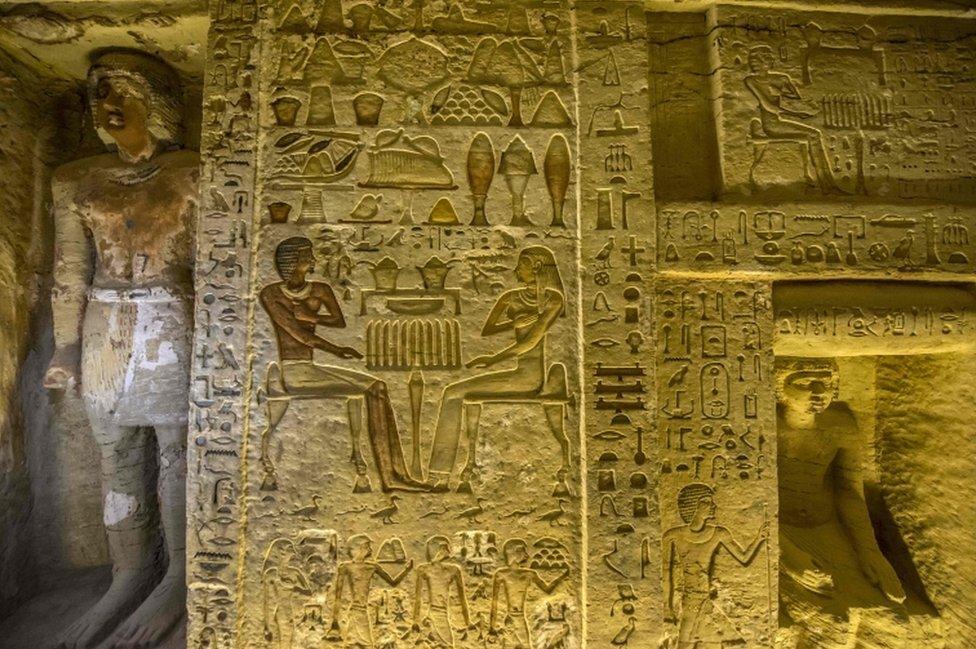
The walls of the tomb are covered in hieroglyphs, the writing system of ancient Egypt
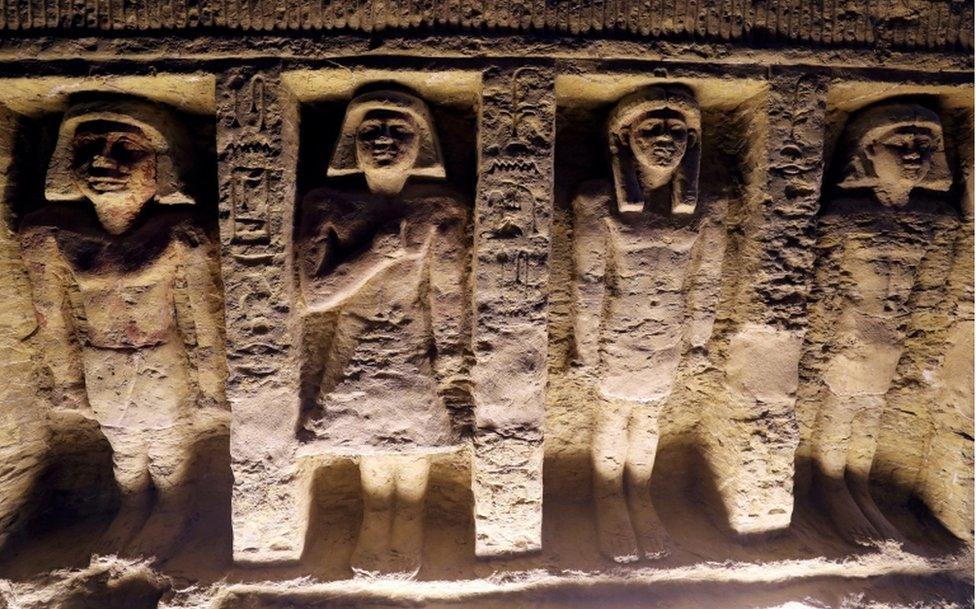
The ancient Egyptians often carved sculptures into the walls of tombs and temples
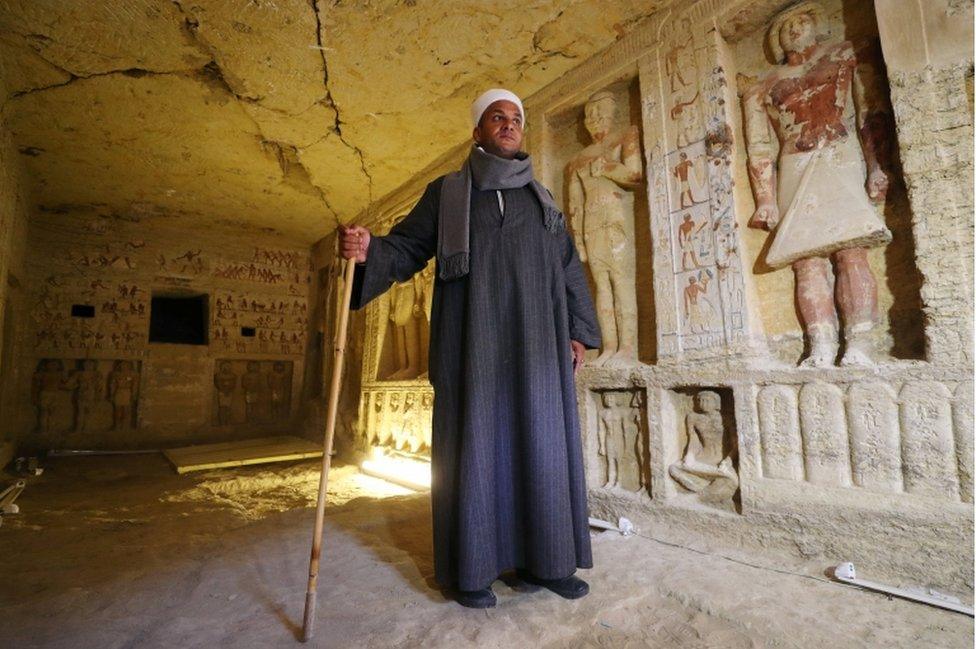
Mustafa Abdo is the project's chief of excavation. The tomb is 10m (33 ft) long, 3m (9.8ft) wide, and a little under 3m high
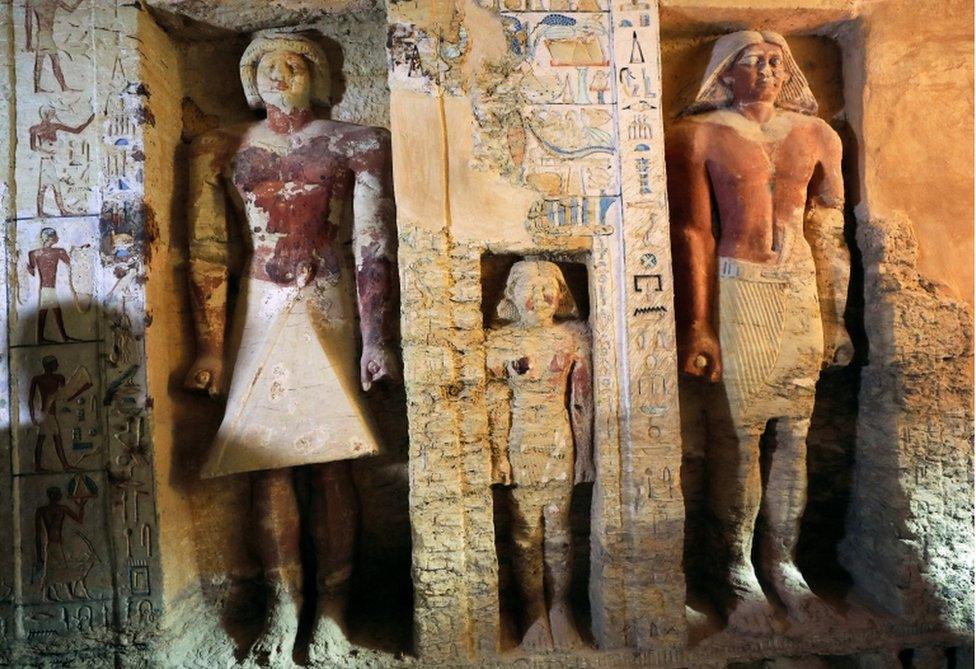
Priests were important people in ancient Egyptian society, as pleasing the gods was a top priority
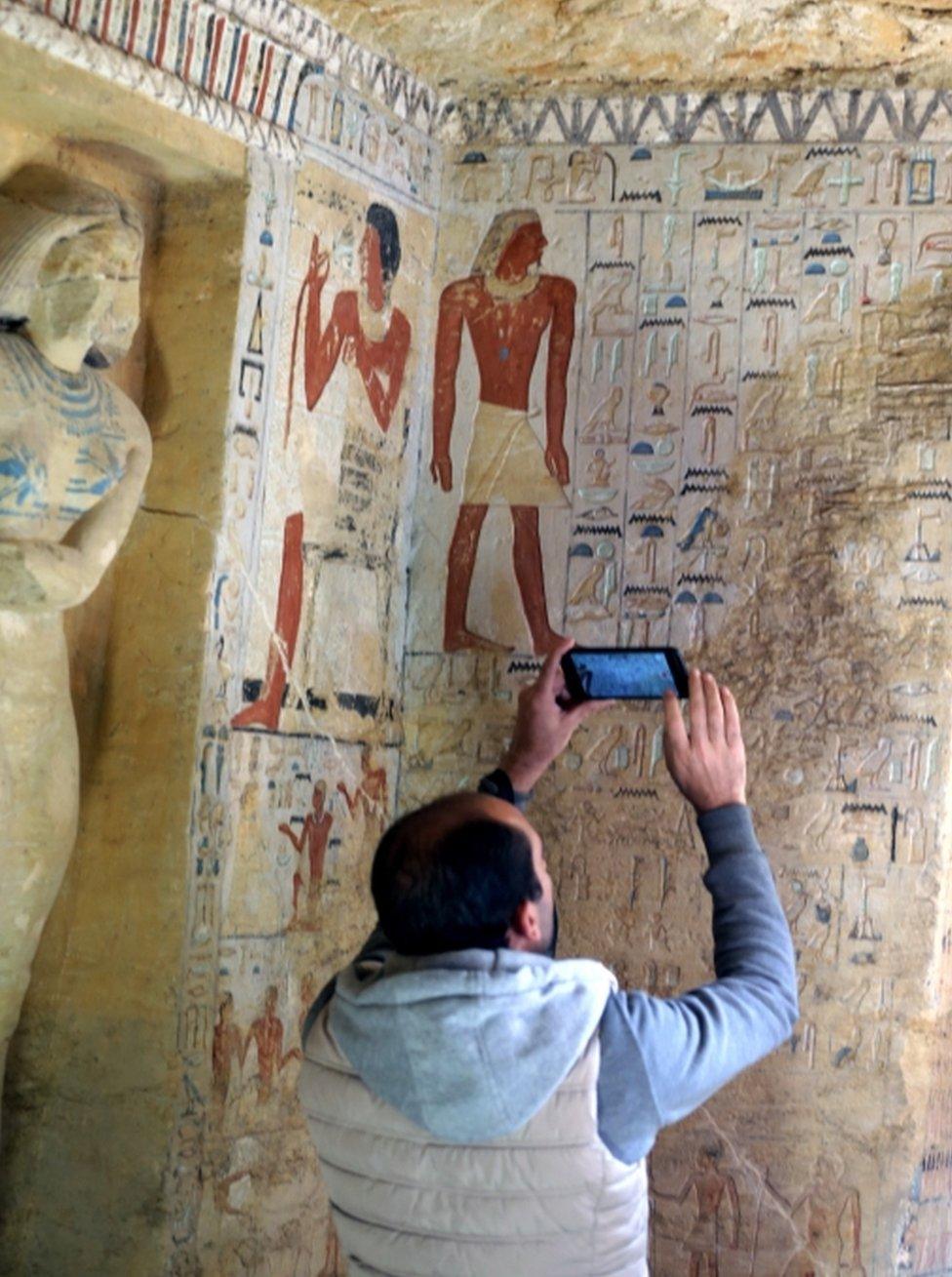
The tomb's colours have survived unusually well for almost 4,400 years, experts said
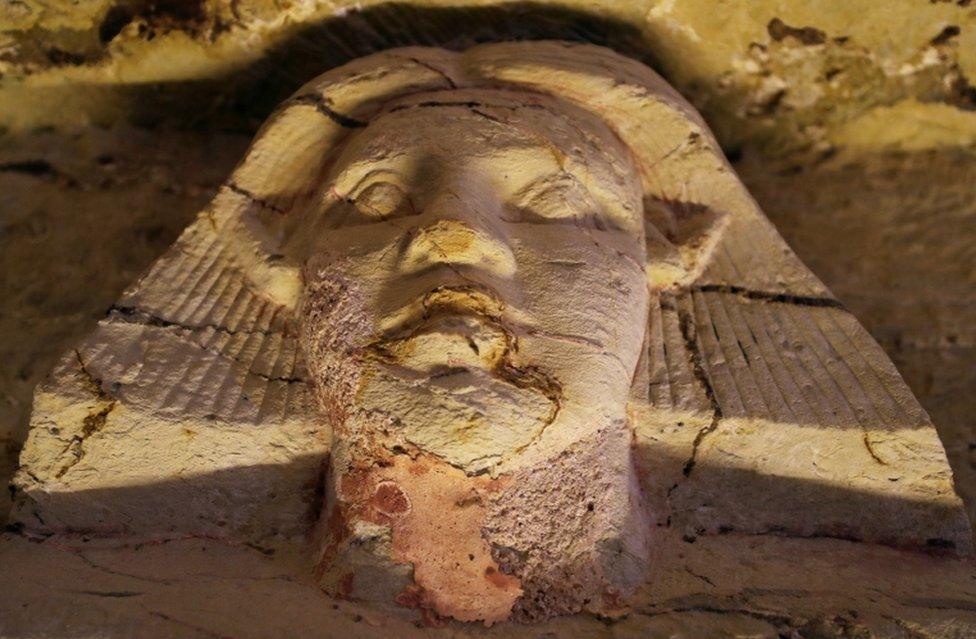
The artefacts date from the Fifth Dynasty, which ruled Egypt from around 2,500 BC to 2,350
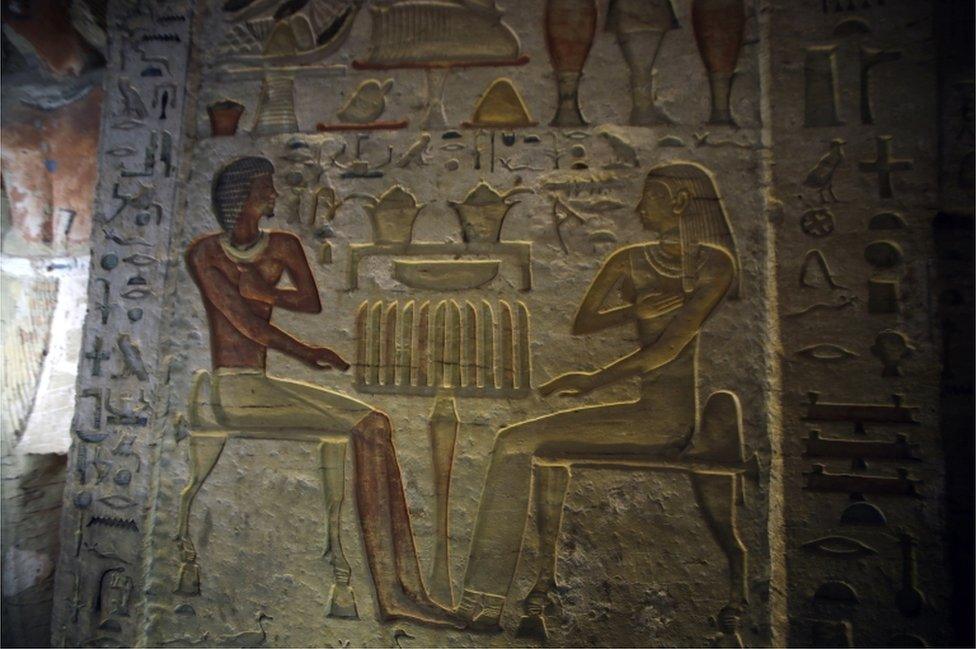
The coloured wall scenes depict the owner, a high priest, with his family
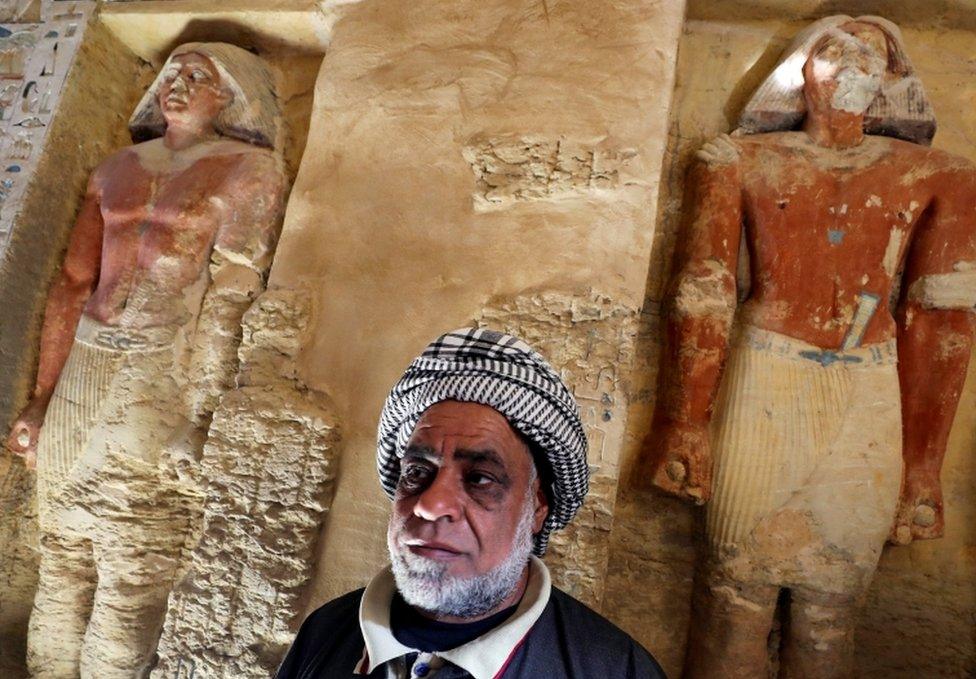
Archaeologists plan to explore the tomb further, and should find the priest's coffin soon
The 4,400-year-old tomb is filled with hieroglyphs and statues
All pictures subject to copyright
- Published16 August 2018
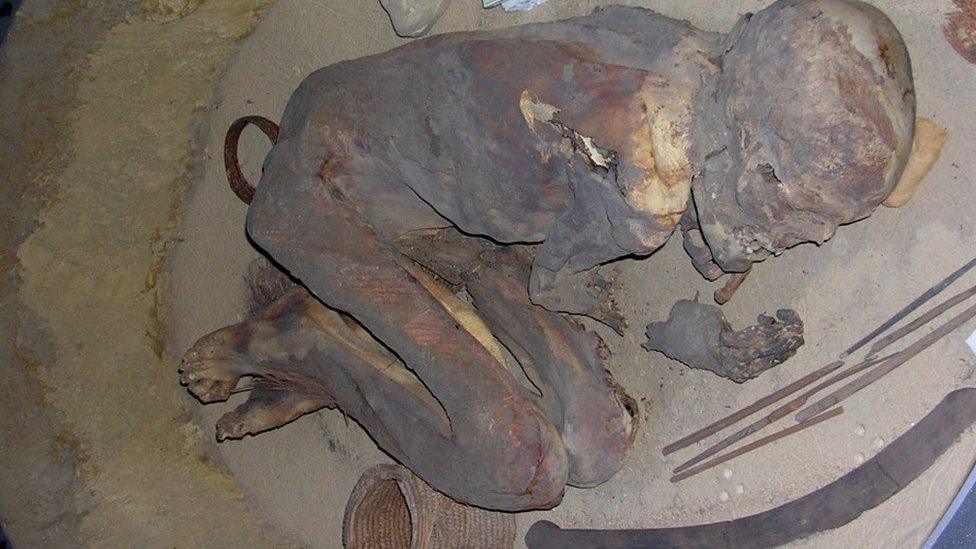
- Published10 November 2018
- Published24 November 2018
